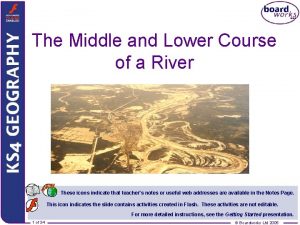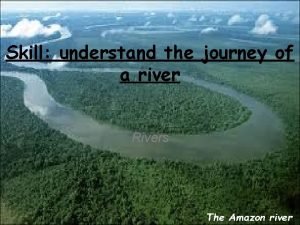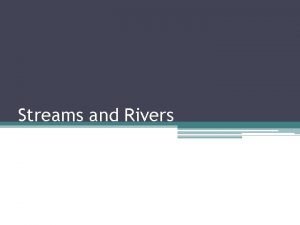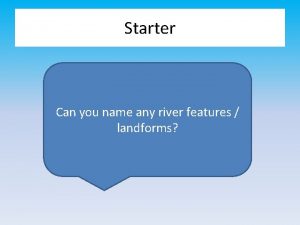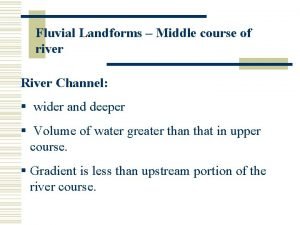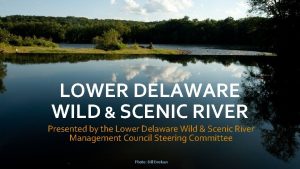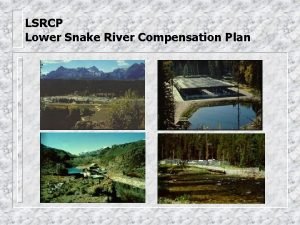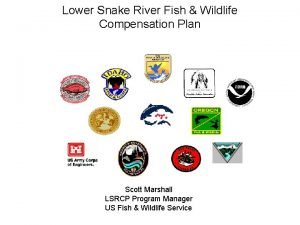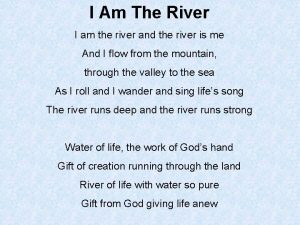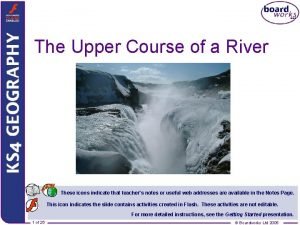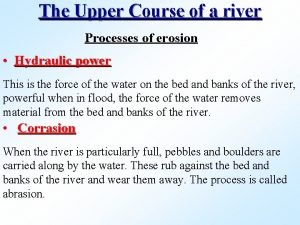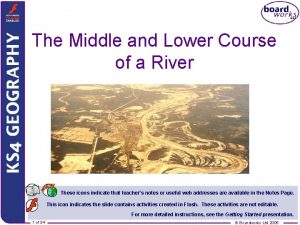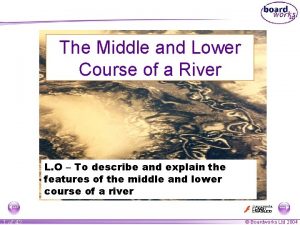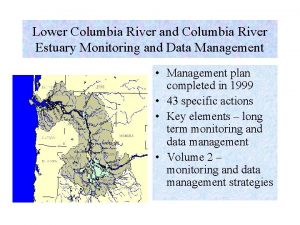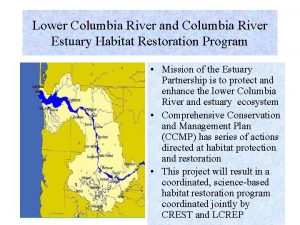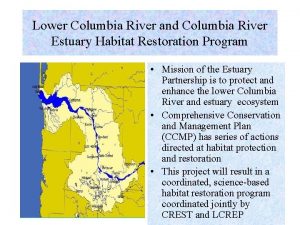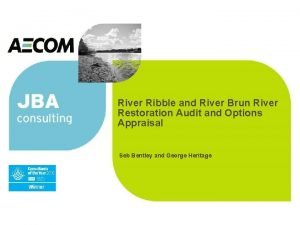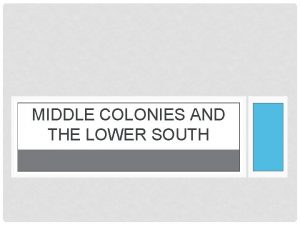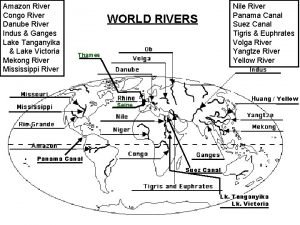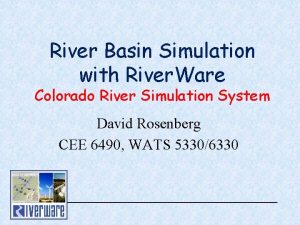The Middle and Lower Course of a River













- Slides: 13

The Middle and Lower Course of a River 1 of 42 © Boardworks Ltd 2004

What landforms are found in the middle and lower course? 1) Meanders 2) Oxbow Lakes 3) Floodplains and Leveés 4) Deltas 2 of 42 © Boardworks Ltd 2004

Meander = a bend in a river 3 of 42 © Boardworks Ltd 2004

Oxbow lakes 4 of 42 © Boardworks Ltd 2004

Oxbow lakes new course of the river oxbow lake 5 of 42 When the river floods it breaks through the thin Meander neck meander neck and the becomes river takes thesmaller easier, straight course. This leaves the meander loop ‘cut off’ as an oxbow lake. Over time, the oxbow lake will become colonised by vegetation. © Boardworks Ltd 2004

Meander bend on the River Conwy A B Explain why there is more deposition at ‘A’ rather than at ‘B’. 6 of 42 © Boardworks Ltd 2004

Sketch this plan view of a meander bend and label the line of highest velocity. 7 of 42 © Boardworks Ltd 2004

Draw the following four diagrams in the correct order of oxbow lake formation. Match 3 of the diagrams with the most appropriate explanation from ‘A’, ‘B’ and ‘C’. 2. 1. XX 3. XX 4. X X= erosion on the outside of the meander bend A. The river floods and erodes through the thin meander neck. The river now takes the easier, straight course. The meander loop is left as an oxbow lake. B. The river meanders. The fastest flow is therefore on the outside of the bend. This fast current erodes the meander neck through the processes of erosion. C. The meander neck is further eroded until only a thin piece of land separates the two channels. 8 of 42 © Boardworks Ltd 2004

Floodplains 9 of 42 © Boardworks Ltd 2004

Floodplain formation Floodplains and levees are formed by deposition in times of river flood. The river’s load is composed of different sized particles. When a river floods it deposits the heaviest of these particles first. The larger particles, often pebble-sized, form the leveés. The sands, silts and clays are similarly sorted with the sands being deposited next, then the silts and finally the lightest clays. This deposition makes up the floodplain. 10 of 42 © Boardworks Ltd 2004

This is a cross section of a floodplain. Draw a simple sketch of the diagram and annotate with the following labels: leveés 11 of 42 sands clays and silts © Boardworks Ltd 2004

The River Conwy has deposited material in this section of its course. Suggest reasons why this happened. 12 of 42 © Boardworks Ltd 2004

13 of 42 © Boardworks Ltd 2004
 Lower course of a river
Lower course of a river Lower course of a river
Lower course of a river Streams and rivers abiotic factors
Streams and rivers abiotic factors Middle course of a river
Middle course of a river Course of river
Course of river Middle course of a river
Middle course of a river Lower delaware national wild and scenic river
Lower delaware national wild and scenic river Lower snake river compensation plan
Lower snake river compensation plan Lower snake river compensation plan
Lower snake river compensation plan I am the river and the river is me
I am the river and the river is me Course title and course number
Course title and course number Green river (duwamish river tributary)
Green river (duwamish river tributary) The upper course of a river
The upper course of a river Upper course of a river
Upper course of a river
